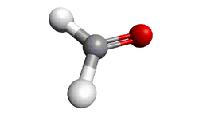|
Transition frequencies with microwave accuracy were
determined by
(1) D. Dangoisse, E. Willemot, and J. Bellet,
1978, J. Mol. Spectrosc. 71, 414.
The lowest frequency line as well as measurements from
earlier sources have been omitted. Extensive far-infrared
data were reported in
(2) J. Lohilahti, H. Mattila, V.-M. Horneman,
and F. Pawlowski,
2005, J. Mol. Spectrosc. 234, 279.
The extensive data set of the first entry from Sep. 2008
was supplemented recently by an extensive set of lines
recorded betwenn 1.1 and 1.52 THz and reported
by
(3) O. Zakharenko, R. A. Motiyenko, L. Margulès,
and T. R. Huet,
2015, J. Mol. Spectrosc. 317, 41.
Some higher order parameters were estimated from the
D2CO parameters.
The uncertainties of (3) appeared to be quite conservative.
Therefore, we decreased these uncertainties by a factor
of 1.5. The far-infrared data showed several residuals
larger than three times the reported uncertainties.
The majority of the lines was higher in frequency than
calculated. Even after omission of these lines, the
far-infrared data were reproduced just barely within
the reported 3 MHz. Moreover, the lines are on
avarage still 1.5 MHz high. It may be advisable to set
the uncertainties to 4.5 MHz.
The data from (1) and (2) have not been merged.
The predictions of very high lying rotational states
have been improved with respect to the first entry.
The predictions should be adequate throughout not only for
astronomical observations but also for laboratory spectroscopy.
At low temperatures, it may be necessary to discern between
ortho-D2CO and para-D2CO.
The ortho states are described by Ka even,
the para states by Ka odd.
The nuclear spin-weight ratio is 2 : 1 for
ortho-D213CO :
para-D213CO.
The JKaKc = 111
is the lowest para state. It is 5.5867 cm–1
above ground.
The dipole moment was assumed to agree with that of D2CO,
see e032502.cat.
|
